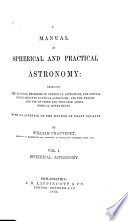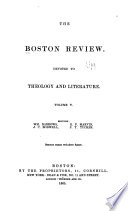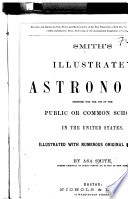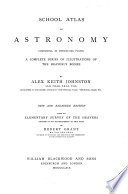 | William Chauvenet - Astronomical instruments - 1863 - 764 pages
...equations by the method of least squares will determine the three unknown quantities d<p, daw and dpa. THE CONSTANT OF SOLAR PARALLAX. 425. The constant...to the cubes of their mean distances from the sun, VOL. I.— 43 that is, to the cubes of the semi-major axes of their orbits. The ratios of these distances... | |
 | Augustus William Smith - Mechanics, Analytic - 1863 - 340 pages
...of the sun is one of the foci. 3°. The squares of the times of revolution of the different planets are proportional to the cubes of their mean distances from the sun, or the semi.major axes of their orbits. These laws relate only to the center of inertia of each planet,... | |
 | William Chauvenet - 1864 - 720 pages
...earth's orbit: so that the constant of solar parallax belongs to the whole solar system. The rektive dimensions of the orbits of the planets are known...distances from the sun, that is, to the cubes of the semi-major axes of their orbits. The ratios of these distances are therefore known. Again, the form... | |
 | Congregationalism - 1865 - 654 pages
...to a little science, when he announced the law that the squares of the periodic times of the planets are proportional to the cubes of their mean distances from the sun. It has been generally believed that these three great laws of planetary motion were not only discovered... | |
 | John Kerr - Mechanics - 1866 - 358 pages
...ellipse, in which the Sun occupies one focus. (3.) The squares of the periodic times of the planets are proportional to the cubes of their mean distances from the Sun. Each of the smaller systems constituted by a planet and its satellites is subject to the same three... | |
 | John Davis - Astronomy - 1867 - 384 pages
...passes over equal areas in equal periods of time. 3. The squares of the periodic times of the planets are proportional to the cubes of their mean distances from the sun. Anterior to the promulgation of the Copernican theory of planetary motion, the circle, and the circle... | |
 | Asa Smith - 1868 - 86 pages
...discovered that all the planets are subject to one general LAW, which is, that the " square» of thtir periodic times are proportional to the cubes of their mean distances from the sun." This law was fully demonstrated and established by Sir ISAAC NEWTON. Astronomers found it very easy... | |
 | English literature - 1868 - 1236 pages
...of the diii'ereiit planets round the sun, had discovered that the squares of the times of revolution are proportional to the cubes of their mean distances from the sun.. It is possible, moreover, to calculate for each of the planets (as already indicated for the moon)... | |
 | Charles Dickens - 1868 - 680 pages
...of the di licrent planets round the sun, had discovered that tin- squares of the times of revolution are proportional to the cubes of their mean distances from the sun. It is possible, moreover, to caleulate for each of the planefs (as already indicated for the moon)... | |
 | Alexander Keith Johnston - Astronomy - 1869 - 172 pages
...will sweep over equal areas in equal times. 3. The squares of the times of revolution of the planets are proportional to the cubes of their mean distances from the sun. The first of these theorems defines the form of the curve in which the planet revolves, and its position... | |
| |